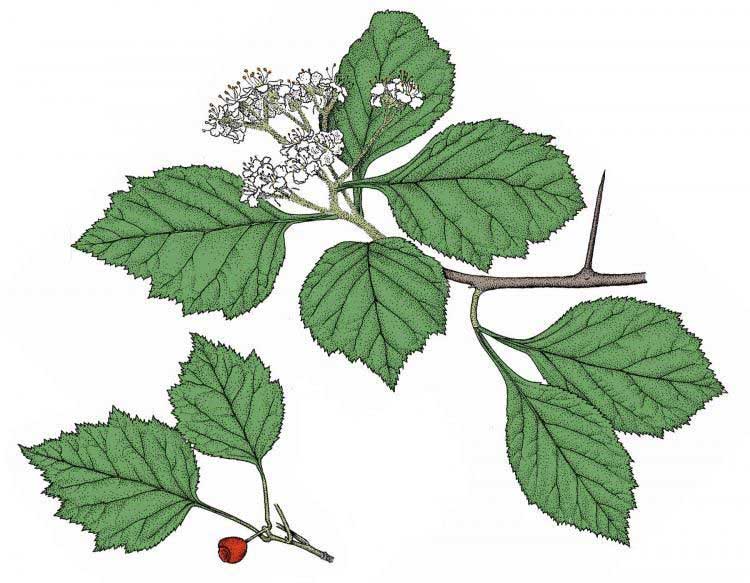Family: Rosaceae
This tree is most easily recognized by the slender needle-like spines. There are several native species of hawthorns, and species-level identification can sometimes be difficult. There are also many ornamental and cultivated varieties of hawthorn that are used in residential landscaping.
The hawthorn tree produces pretty white flowers in the spring and small red berry-like fruits in the fall. The fruits are edible, but the seeds contain cyanide and should not be eaten. So if you eat the fruits, you should spit out the seeds. This tree is considered to be good for wildlife, and the berries are eaten by birds.
Additional References:
http://forestry.ohiodnr.gov/hawthorn

